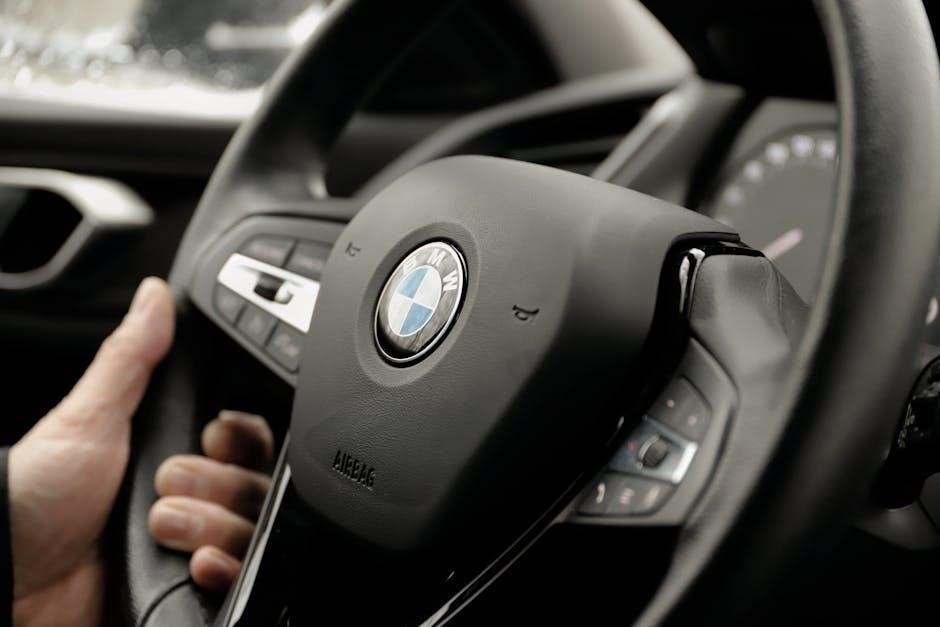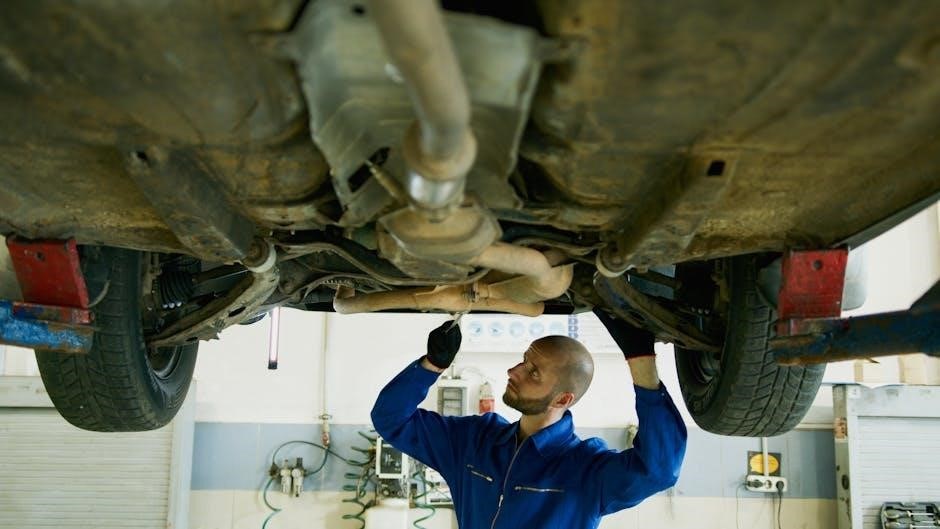Manual for Safety 1st Car Seat: A Comprehensive Guide
The Safety 1st car seat manual is essential for properly using the child restraint. It offers step-by-step instructions and safety guidelines for secure installation. Parents can refer to it for harnessing information, ensuring the correct fit, and understanding weight limits. The manual also guides cleaning and maintenance.
Safety 1st car seats, also known as child restraints, are designed to protect children in vehicles. This guide is designed to help you understand the importance of your Safety 1st car seat manual. Safety 1st car seats are essential for safeguarding children during travel, and proper usage, according to the user manual, is crucial. The manual provides detailed instructions, safety guidelines, and tips to ensure correct and secure usage.
This comprehensive manual will guide you through effectively using your Safety 1st car seat. It emphasizes the importance of following instructions for your child’s safety. We will also cover the essential parts of the car seat, installation techniques, and safe usage practices. Whether you’re a new parent or seeking a refresher, this guide will equip you with the knowledge to protect your child on every journey. Remember, your child’s safety is of utmost importance and following these instructions ensures the best possible protection, so be sure to read the manual carefully!
Understanding Car Seat Components
Familiarizing yourself with the components of your Safety 1st car seat is the first step towards ensuring your child’s safety. Each part plays a crucial role in providing optimal protection during a ride. Typically, Safety 1st car seats include a robust shell designed to absorb impact forces, providing an essential barrier in the event of a collision. The harness system, comprising straps and buckles, securely holds your child in place, preventing ejection or excessive movement during sudden stops or accidents.
Adjustable headrests offer crucial head and neck support, while energy-absorbing foam lines critical areas, further minimizing the risk of injury. The LATCH system or vehicle belt paths facilitate secure car seat installation, ensuring compatibility with various vehicle types. Understanding these components empowers parents to correctly adjust, install, and maintain the car seat, thereby maximizing its safety potential. Consulting your car seat manual is an important step to understanding each component, to ensure safety.
Importance of the User Manual
The user manual for your Safety 1st car seat is not just a booklet; it’s your primary resource for ensuring your child’s safety on every journey. The manual contains vital information about installation, proper usage, and maintenance, all tailored to your specific car seat model. Ignoring it can lead to incorrect installation, misuse of the harness system, and failure to adhere to weight and height limits, significantly compromising your child’s safety.
The manual provides step-by-step instructions for both rear-facing and forward-facing configurations, as well as guidance on using the LATCH system or vehicle seat belts. It also details how to adjust the harness for a snug and secure fit, ensuring your child is protected in the event of a collision. Regular reference to the manual will empower you to use your car seat correctly and confidently, providing peace of mind knowing your child is as safe as possible.

Installation Guide
Proper car seat installation is paramount for child safety. This guide offers clear instructions for rear-facing, forward-facing, and booster modes. Learn about LATCH system and vehicle belt options. Tether usage is also explained to maximize safety.
Rear-Facing Installation
The rear-facing installation is the initial stage for infants and young toddlers, offering superior protection in case of a collision. Always consult both the car seat manual and your vehicle’s owner’s manual before beginning the installation process. Ensure that the car seat is placed in a rear-facing position according to the manufacturer’s guidelines. Check height and weight limits before installing.
Begin by positioning the car seat on the vehicle seat, paying close attention to the angle indicators. These indicators help ensure the correct recline. Use either the LATCH system or the vehicle’s seat belt to secure the car seat. Ensure a snug fit by tightening the straps or belt.
Double-check that the car seat does not move more than one inch from side to side or front to back when tested at the belt path. If using the LATCH system, confirm that the connectors are securely attached to the vehicle’s anchor points. If using the seat belt, lock the seat belt and ensure that it is routed correctly through the belt path.
Remember to consult your Safety 1st car seat manual for model-specific instructions and diagrams.
Forward-Facing Installation
Forward-facing installation is for older children who have exceeded the rear-facing height and weight limits, as specified in the Safety 1st car seat manual. Before you begin, make sure your child meets these requirements for optimal safety. Always consult both your car seat manual and your vehicle’s owner’s manual.
Position the car seat in the forward-facing direction, aligning it properly on the vehicle seat. Use the LATCH system or the vehicle’s seat belt to secure the car seat, following the instructions provided in the manual. Ensure the car seat is tightly installed and does not move excessively.
Connect the top tether strap to the designated anchor point in your vehicle, as this significantly enhances stability. Tighten the tether strap until it is snug, further securing the car seat. Ensure the car seat moves no more than one inch from side to side or front to back when checked at the belt path.
Double-check that the LATCH connectors are securely attached or that the seat belt is locked and routed correctly. Refer to the Safety 1st car seat manual for specific instructions and diagrams for your car seat model.
LATCH System vs. Vehicle Belt Installation
When installing a Safety 1st car seat, you have two primary options: the LATCH (Lower Anchors and Tethers for Children) system or the vehicle’s seat belt. Understanding the differences is crucial for ensuring a secure installation. The LATCH system, available in most newer vehicles, uses lower anchors and a top tether to secure the car seat directly to the vehicle frame, typically easier to use.
Vehicle belt installation uses the car’s existing seat belt to secure the car seat. This method is necessary if your vehicle lacks LATCH anchors or when the child’s weight exceeds the LATCH weight limit, which is often 65 pounds combined car seat and child weight. Refer to both your car seat and vehicle manuals for specific weight limits.
If using the seat belt, ensure it is locked to prevent the car seat from moving. This typically involves pulling the seat belt all the way out and then slowly retracting it until tight. Whether using LATCH or the seat belt, always use the top tether if available, as it significantly enhances the car seat’s stability. Consult your Safety 1st car seat manual for detailed instructions and diagrams for both methods.
Tether Usage
The tether strap, found on most forward-facing Safety 1st car seats, plays a critical role in enhancing child safety. It significantly reduces forward head movement during a crash, minimizing the risk of injury. Always use the tether when installing your car seat in the forward-facing position. To use the tether, locate the tether anchor in your vehicle, often found on the rear deck, cargo area floor, or the back of the vehicle seat.
Consult your vehicle owner’s manual to identify the correct tether anchor location. Route the tether strap from the car seat over or around the vehicle seat, as specified in your car seat manual, and attach it to the tether anchor. Tighten the tether strap until it is snug, but not overly tight, to avoid distorting the car seat.
A properly installed tether limits the car seat’s rotation and forward movement, providing an extra layer of protection. Even when using the LATCH system or the vehicle seat belt, always use the tether if available. Regularly inspect the tether strap for any signs of wear or damage and replace it if necessary. Refer to your Safety 1st car seat manual for detailed instructions and diagrams specific to your model.

Using the Car Seat Safely
Safe car seat usage involves proper harness adjustment and ensuring a snug child fit. Always adhere to the specified height and weight limits outlined in the Safety 1st car seat manual. Consistent adherence to these guidelines maximizes your child’s safety during travel.

Harness Adjustment
Proper harness adjustment is paramount for your child’s safety. Begin by consulting your Safety 1st car seat manual for specific instructions. Ensure the harness straps are positioned at or slightly below your child’s shoulders in rear-facing mode. For forward-facing, the straps should be at or above the shoulder level.
The harness should fit snugly against your child’s body. You should not be able to pinch any excess webbing at the shoulder. If the harness is too loose, it won’t effectively restrain your child in a crash. Check the manual for tightening and loosening mechanisms.
Always re-adjust the harness each time you place your child in the seat. Children grow quickly, and the harness position needs to adapt accordingly. Make sure the chest clip is positioned at armpit level. This helps to keep the harness straps properly located on your child’s shoulders.
Refer to your car seat manual for detailed diagrams and instructions on how to properly adjust the harness height and tightness. Incorrect harness adjustment can significantly reduce the car seat’s effectiveness in protecting your child during a collision.
Ensuring Proper Child Fit
Proper child fit is crucial for the car seat to perform effectively. Always consult the Safety 1st car seat manual for height and weight limits. Confirm your child meets the seat’s specifications before each use. Ensure your child’s shoulders are positioned correctly relative to the harness slots.
For rear-facing seats, the top of your child’s head should be at least one inch below the top of the car seat shell. In forward-facing mode, ensure the child’s ears are below the top of the car seat. If your child exceeds these measurements, it’s time to consider a different car seat.
Check the harness straps for proper snugness. Perform the pinch test at the shoulders. You shouldn’t be able to pinch any excess webbing. Adjust the harness height as needed to ensure a secure and comfortable fit.
Pay attention to how your child sits in the seat. Slouching or leaning can indicate an improper fit. Address any issues immediately to maximize safety. Regularly reassess your child’s fit as they grow. Refer to the car seat manual for detailed guidance and illustrations.
Height and Weight Limits
Adhering to the height and weight limits specified in the Safety 1st car seat manual is paramount for your child’s safety. These limits ensure the car seat can provide adequate protection in the event of a collision. Exceeding these limits can compromise the seat’s structural integrity and effectiveness.
Locate the height and weight limits for each mode of use in the manual. Rear-facing, forward-facing, and booster modes each have distinct requirements. Carefully measure your child’s height and weight regularly. Ensure they remain within the specified ranges for the current car seat configuration.
Transitioning to the next car seat stage depends on both height and weight. Do not rush the process based solely on age. Some children may need to stay in a rear-facing seat longer due to their size.
Never use a car seat that has been outgrown. It cannot adequately protect a child who exceeds its limits. Consult the Safety 1st manual for guidance on when to transition to the next stage. Ignoring these limits puts your child at serious risk.

Maintenance and Care
Proper maintenance is key to ensure the Safety 1st car seat’s longevity and safety. Regular cleaning, following the manual’s instructions, will keep it in good condition; Avoid harsh chemicals. Inspect for damage to maintain its protective integrity.
Cleaning Instructions
Maintaining a clean Safety 1st car seat is crucial for your child’s hygiene and the longevity of the seat itself. Always refer to your specific car seat manual for detailed cleaning instructions, as different models may have varying requirements. Generally, you can spot clean the fabric with a mild soap and water solution. Avoid using harsh chemicals, bleach, or solvents, as they can damage the materials and compromise the seat’s safety features.
For deeper cleaning, some car seat covers are machine washable. Check the manual to see if your model’s cover is removable and machine washable, and follow the washing instructions carefully. Typically, a gentle cycle with cold water is recommended, followed by air drying. Never put the car seat cover in the dryer, as the high heat can shrink or warp the fabric.
The plastic components of the car seat can usually be wiped down with a damp cloth and mild soap. Ensure all parts are completely dry before reassembling the car seat. Regularly vacuum the car seat to remove crumbs and debris that can accumulate over time. Always consult the manual!